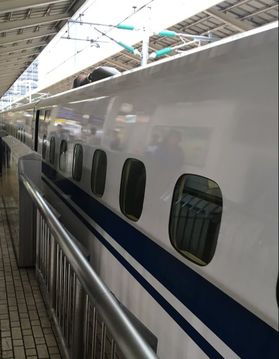|
Tokyo, Japan is one of the largest and most populated cities in the world. As such, it requires a large-scale public transportation system to move people around. For tourists, the Tokyo transit system can be quite overwhelming. There are multiple subway lines, above ground rail lines, and Shinkansen lines. It is important to understand the different options available for planning activities and save money. Narita Express The main method of leaving Narita Airport is by taking the Narita Express into Tokyo. This rail line is fast and convenient to reach Tokyo's busiest neighborhoods as well as Tokyo Station. A one-way ticket from Narita Airport is around ¥3,200 ($29 US Dollars). You must go to a ticket counter to reserve a seat on the train. If you exchange and activate a Japan Rail Pass (JR Pass), the Narita Express fare is included. You will typically want to have one trip coming or going from Narita Airport covered by the JR Pass. If you are trying to reach a destination in Tokyo that the Narita Express does not stop at, you will need to transfer to another rail line. Subway Lines The subway trains that run under Tokyo are one of the more convenient methods of travel. You can take quick trips and easily get to places without too much effort or line switching. There is a free Tokyo Metro App for Android and iOS that can be used offline and online. This makes traveling even easier and a recommended choice of transportation. If you plan to travel to multiple places in a day, you can purchase a one-day pass. Also, you can purchase a PASMO or Suica card to load money on for traveling on subways. This pass eliminates the constant trips to a ticket machine and allows you to swipe through gates. As a side note, the JR Pass does not cover fares on the subway lines. Rapid and Local Service Rail Lines There are multiple rail lines that run above ground connecting all parts of Tokyo and outlying areas. Some of these trains overlap stations with subway line access, but many do not. The rapid service lines have limited stops and are faster ways to travel. Be mindful that rapid service trains may skip a stop you need to depart from. Local service trains stop at each station marked on their route. The above ground railways are great to use when covering long distances across Tokyo. Many rail lines are operated by Japan Railway. The fares for rail lines run by Japan Railway are covered by the JR Pass. Some examples are the Yamanote Line, Chou Line - Sobu Line, and the Shonan Shinjuku Line. There are a handful of above ground rail lines that are privately operated that the JR Pass will not cover. Shinkansen
The Shinkansen line of trains come through Tokyo Station. These high speed rail lines reach all parts of Japan and are the country's most convenient way to travel from city to city. This rail line is not meant for local travel. The JR Pass covers rides on some of the Shinkansen trains such as the Sakura and Hikaru. Tickets on the Shinkansen can get quite expensive without using a JR Pass. The main way to get a seat is to reserve one at one of the ticket offices. The other option is to board one of the first three cars of a JR Pass approved train. These seats are non-reserved and first come first serve. If the seats are all taken, try the next car down or stand in the back of the car until a seat opens up. Comments are closed.
|
Follow me
on Instagram @card_knock_life Categories
All
Archives
July 2024
This website contains affiliate links
|


 RSS Feed
RSS Feed
